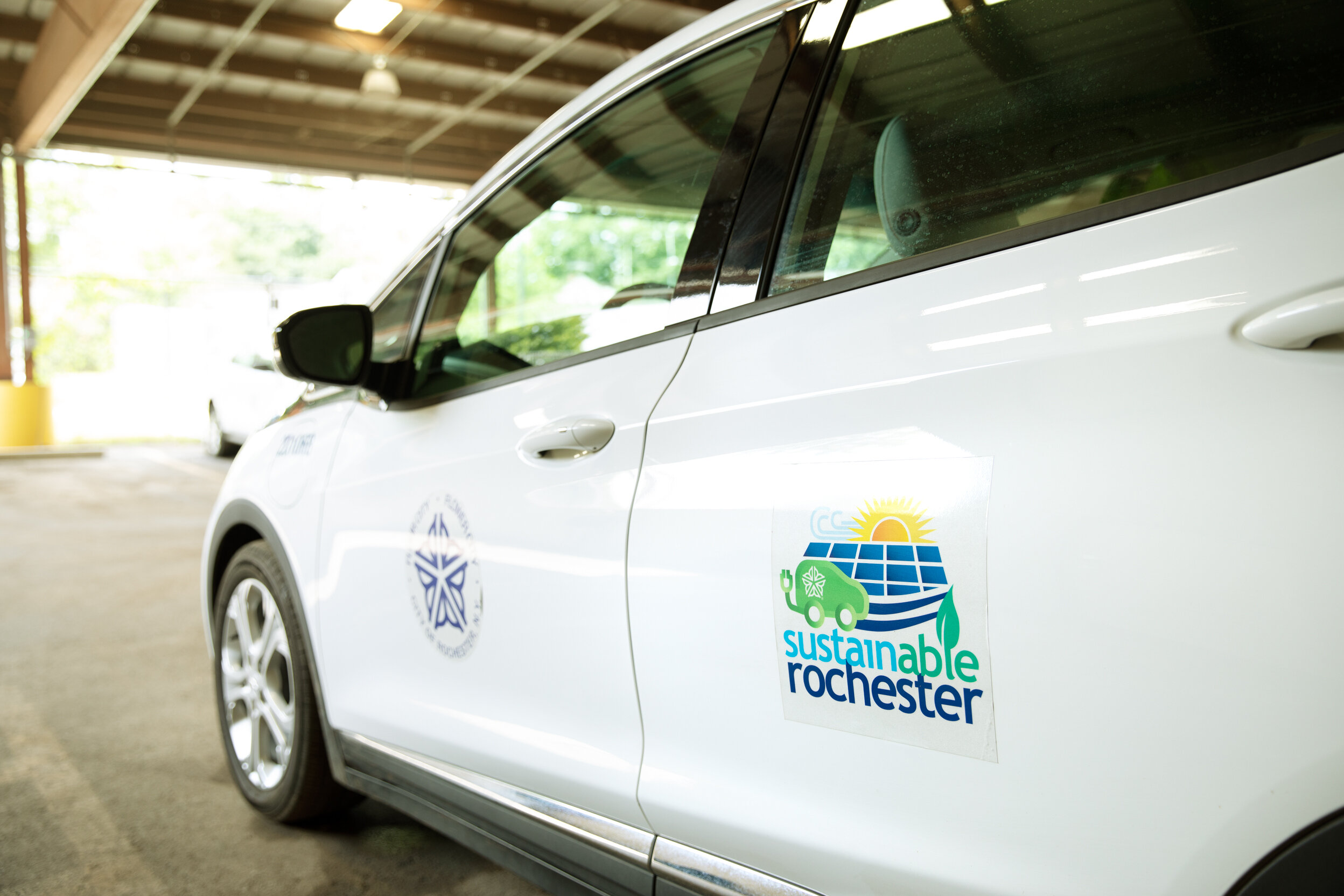Steering Toward Sustainability
Electric Fleets for the City of Rochester

“Any of the skepticism will fall to the side pretty quickly when they see how the vehicles perform.”
ANNE SPAULDING
Manager, Division of Environmental Quality, City of Rochester
Taking Action
For over a decade, Rochester has pursued sustainability initiatives, and reducing greenhouse gas emissions was a major touchstone. “It was important to us to contribute to the mitigation of climate change and to do our part to make a cleaner environment, a greener city, and a more resilient city,” says Anne Spaulding, Manager of Rochester’s Division of Environmental Quality. From “strain on infrastructure” to health problems especially for Rochester’s most vulnerable, who are “disproportionately impacted by the effects of climate change,” according to Spaulding, inaction simply wasn’t an option. Switching to electric fleets fit squarely into this plan, while also making long-term financial sense as well.
Low Maintenance
“We're looking at a 36% decrease in maintenance costs, over an estimated 10-year lifespan of the vehicle,” explains Gary O’Donnell, who works in Equipment Services for the city. “We will continue to put electric vehicles into the fleet because they are saving us money and we've got a mission to reduce our carbon footprint,” O’Donnell adds. “And we're looking forward to continuing that mission.”
Firsthand Use
Geoff Gugel, Director of Water for Rochester, was issued a Chevy Bolt in March 2021 and considers himself a convert. “I was hesitant in the beginning. And my concern was the winter. Will the battery last during the winter months and so forth? But I was totally wrong.” The city is seeing virtually 100% positive feedback when workers take out the electric vehicles. “When a driver drops off their vehicle for scheduled maintenance, we’ll assign them one of the electric vehicles to take out as a loaner. They don't like to give them back,” O’Donnell says with a smile. And Gugel sees these sedans as perfect for inspectors and commuter-type work vehicles. “The small vehicles work really well for in the city. We use it for our meter readers.” Gugel adds, “It's very important that we become a leader and that we show the community that this can be done and it works well.”
Closing the Gap
Cost is obviously a major factor for any municipality or business when making decisions about fleet purchases. Despite a higher upfront cost for electric vehicles, grant funding helps to bring the prices closer. “The issue really with purchasing vehicles for the city is dealing with the cost differential between the conventional vehicle and the electric vehicle,” Spaulding explains. “The grant funding that we were able to find really closes that gap.” Grant sources included NYSERDA, energy efficiency block grants and the Department of Environmental Conservation (D.E.C.). NYSERDA’s Charge Ready New York program also helps subsidize adding charging stations to city buildings.
Future Expansion
And as electric vehicles advance, the city’s fleet will surely expand. “As we replace vehicles, we will spec out what we want and we'll certainly be specking out more EVs,” says Gugel. O’Donnell also sees more EV vehicles in their future. “Always take advantage of innovations in technology if it's out there. We need to move on it and it's only going to get better as time goes on,” says O’Donnell. “And if you're sitting back just using the same old dead technology, your fleet is never going to grow and it's never going to get better.”
Project Highlights
Estimated 36% decrease in maintenance costs over 10 years
100% positive driver feedback
Expanding to larger EV vehicles
in the near future





